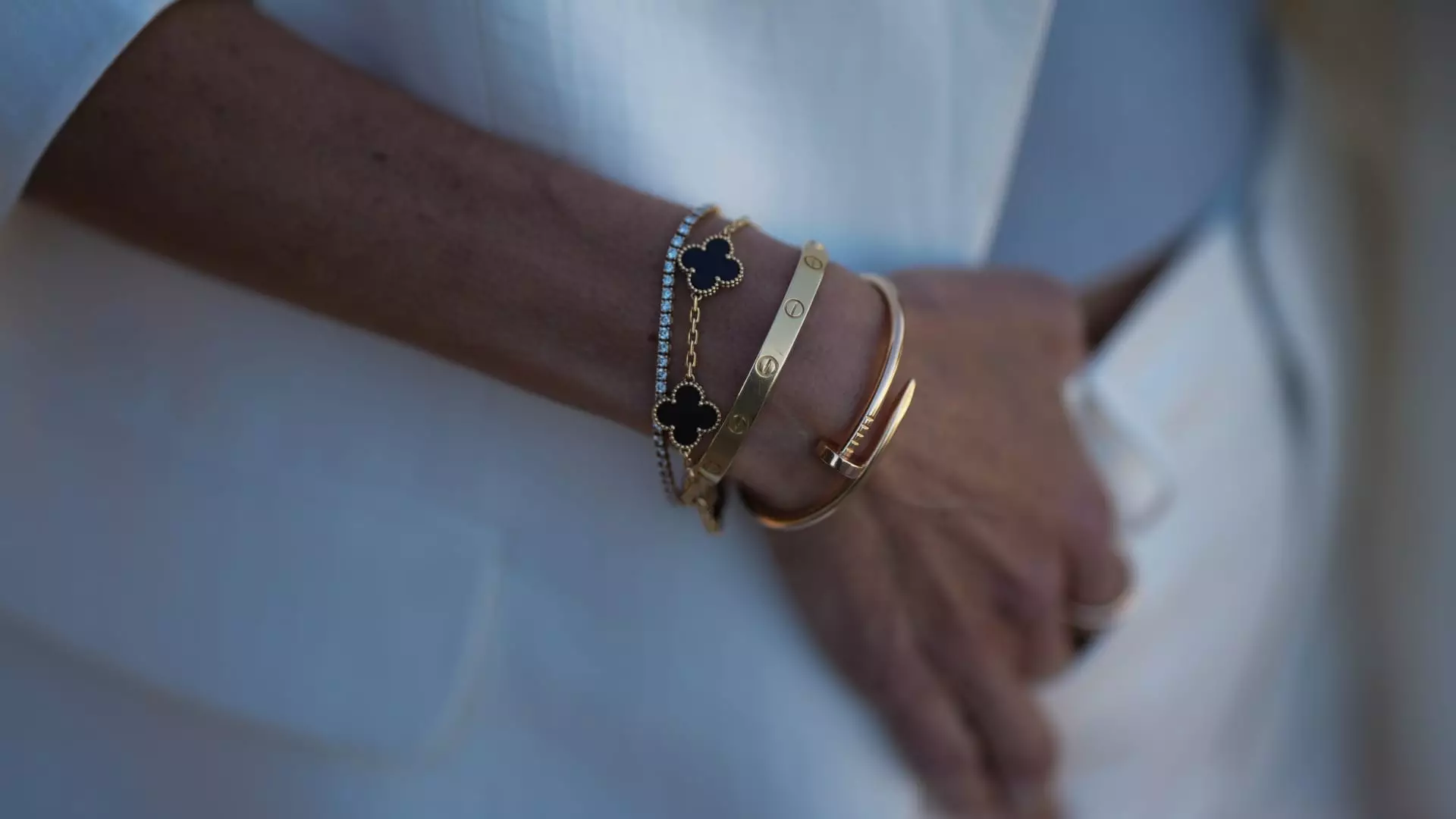Many analysts projected a robust comeback for luxury retail in 2025, buoyed by a strong holiday season and a wave of post-election optimism. Yet, beneath this seemingly promising surface lies a starkly different truth. Recent data from Citigroup reveals that U.S. credit card spending on luxury goods has actually declined during the first five months of the year, compared to the same timeframe in 2024. Seasoned observers know that such data often signal deeper, structural issues rather than fleeting fluctuations. The projection of a turnaround appears overly optimistic, perhaps even disconnected from the actual economic climate facing consumers today. A closer look shows that, despite some pockets of resilience—such as jewelry—the overall picture suggests a fragile and precarious confidence in high-end consumer spending.
The Illusive Allure of Jewelry: The Only Bright Spot?
Surprisingly, jewelry stands out as the sole category showing consistent growth. Since last September, luxury jewelry spending has exhibited an unbroken rise of more than 10% annually, culminating in a 10.1% increase in May. What explains this anomaly? Jewelry’s perception as an investment and a symbol of emotional significance appears to be driving its resilience. Unlike handbags or ready-to-wear, jewelry is increasingly viewed as a store of value, especially amid economic uncertainty. The fact that remaining high-end jewelry customers are spending more, even as their numbers shrink, reveals a shift from a broad-based luxury consumer to a more selective, affluent subset. It’s a nuanced trend, but one that underscores how luxury’s perceived intrinsic value is being traded for tangible, emotional, or investment qualities—an indication that the broader consumer base is losing confidence in the durability of high-priced fashion items.
Luxury Goods as Status and Investment: The Cracks Begin to Show
The narrative that jewelry is attracting a new wave of buyers as an “investment” overlooks the larger systemic issues at play. When high-end brands face customer attrition—certain brands losing 2.7% of clients—yet those remaining spend considerably more, it’s a sign of a consolidating market rather than growth. These shifts hint at a segment increasingly driven by wealthy individuals rather than middle-class aspirants. Moreover, the surge in gold prices and the perception of jewelry as holding more lasting value point towards an evolving mentality: consumers are adopting a cautious approach, preferring assets with intrinsic worth rather than fleeting trends. This development highlights a broader trend of skepticism toward fashionable luxury items, which have historically relied on novelty and exclusivity to perpetuate their allure. The disconnect between rising prices—especially for handbags that have inflated by as much as 40%—and limited innovation points to a market that is losing its luster for mainstream consumers and increasingly catering to a smaller, wealthier elite.
Why Are Watch and Bag Sales Falling Short?
Luxury watch sales tell a different story—somewhat encouraging but ultimately inconsistent. While overall watch spending increased nearly 15%, leading headlines have masked a 10% decline in top-tier brands in the same period. The recent spike in Swiss exports inflated by supply chain adjustments and stockpiling, rather than genuine consumer demand, suggests that underlying sentiment remains fragile. Similarly, handbag brands have driven prices up dramatically without bringing corresponding increases in consumer value or newness to their offerings. For many consumers, the dearth of innovation and differentiation renders these high-priced bags frustratingly generic. This sameness diminishes their aspirational appeal, highlighting an industry that’s more adept at cycling prices upward than delivering authentic innovation or meaningful value to customers.
Economic Warnings and Political Hazards Loom Large
The current landscape is fraught with economic and political uncertainties that threaten to deepen the decline in luxury spending. The expiration of delays in punitive tariffs, geopolitical tensions like the Iran-Israel conflict impacting oil prices, and the weakening of the U.S. dollar all undermine consumer confidence. A declining dollar makes luxury travel and foreign purchase more expensive, further dampening enthusiasm. Yet, paradoxically, a weaker dollar might stimulate some luxury spending abroad—though that benefits multinational corporations more than consumers. Ultimately, these macroeconomic factors throw into sharp relief the illusion that the luxury market can sustain its recent cautious optimism. Instead, what we are witnessing is a market increasingly vulnerable to external shocks—a reflection of broader economic fragility masked behind the allure of luxury.
The recent figures paint a sobering picture of a luxury market in decline, contrary to the narratives of a rebound. Jewelry, with its intrinsic and sentimental appeal, appears as a rare bright spot—yet it also signals a broader shift in consumer priorities, leaning toward assets that promise stability rather than fleeting fashion. Meanwhile, the stagnation in handbag and watch sales reveals an industry struggling to innovate or justify its premium prices amid waning consumer confidence. The combination of economic volatility, geopolitical tensions, and a weakened dollar underscores the fragility of the supposed luxury resurgence. Far from a genuine turnaround, what we see is a market clinging to illusions, driven not by sustainable growth but by the wealthiest who are increasingly hesitant to indulge beyond their means.

